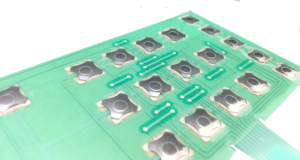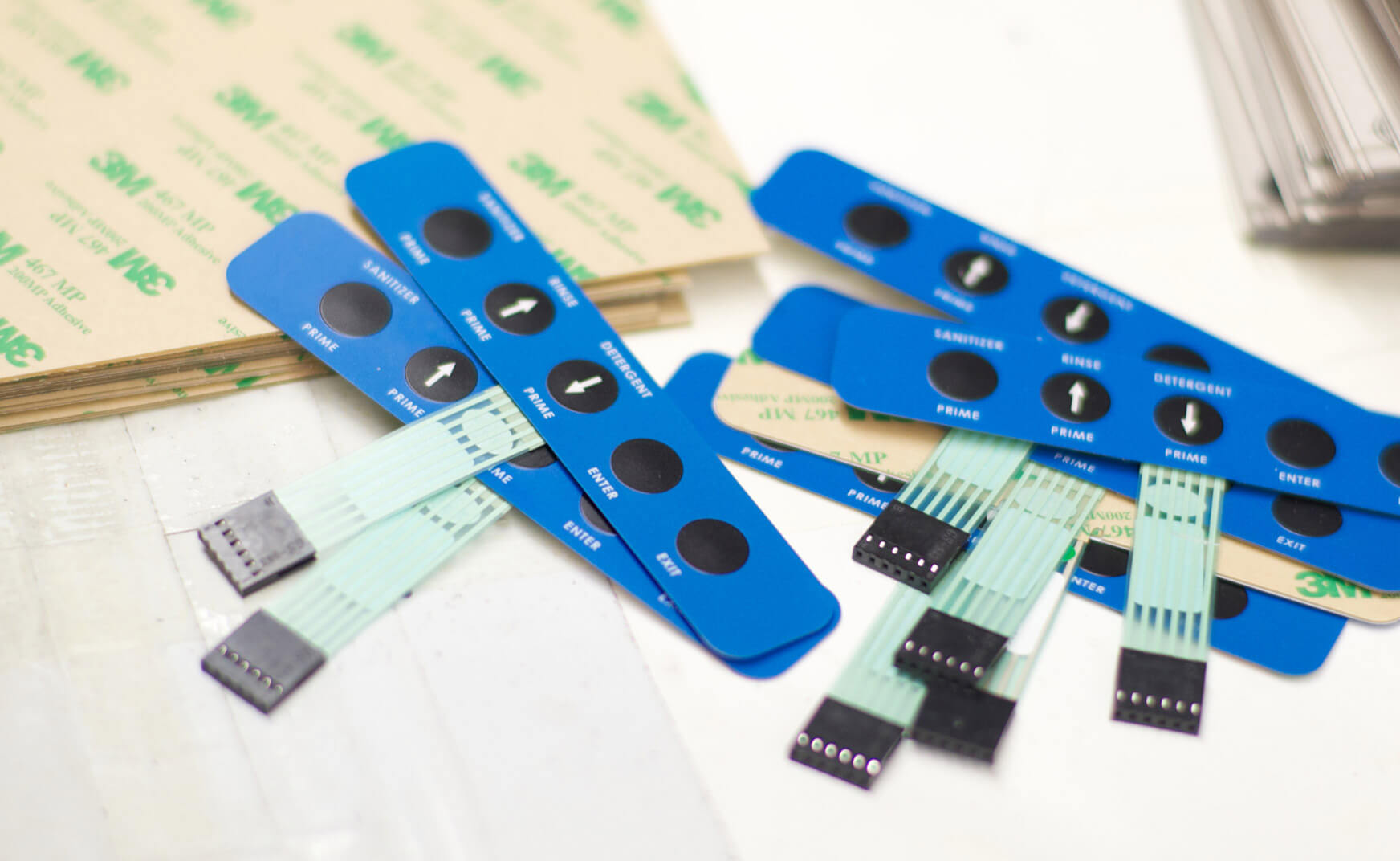The Total Guide to Membrane Switch Technology and Its Applications
The Total Guide to Membrane Switch Technology and Its Applications
Blog Article
Comprehending the Functionality of Membrane Layer Switches for Individual Interface Instruments
The functionality of membrane layer switches represents a significant innovation in user interface layout, combining effectiveness with visual versatility. As markets increasingly focus on user experience, comprehending the nuances of membrane switch innovation comes to be necessary.
What Are Membrane Buttons?
Membrane layer switches are innovative interface tools that facilitate individual interaction with electronic devices. These functional parts include multiple layers, including a graphic overlay, spacer, and a printed circuit layer. The layout allows for a seamless assimilation right into different electronic gadgets, enhancing both the visual and useful aspects of interface.
Membrane switches are frequently utilized in a wide variety of applications, from household appliances to industrial equipment and medical devices. Their building and construction generally features a slim account, making them an ideal selection for portable layouts. The tactile feedback given by these switches can be crafted to satisfy particular customer choices, making certain effective communication between the customer and the device.
Toughness is an additional considerable advantage of membrane layer buttons, as they are resistant to dirt, moisture, and chemicals, which boosts their life expectancy sought after environments. In addition, these switches can be tailored in terms of shape, dimension, and graphic design, permitting for branding and user-specific functions. Overall, membrane layer changes stand for a functional service for enhancing customer experience in digital gadgets, incorporating functionality with aesthetic appeal in a reliable manner.
Just How Membrane Switches Over Work
Operating on an uncomplicated principle, membrane layer switches use a layered construction to sign up user input efficiently. Each switch contains multiple layers, consisting of a published circuit layer, a spacer layer, and a leading visuals layer, which are made to work together perfectly. When a customer presses the leading layer, it compresses the spacer layer, bringing the conductive aspects of the circuit layer into call with each other.
This get in touch with creates a closed circuit, indicating the device to perform a details function. The style enables numerous configurations, including tactile comments, which can improve the individual experience by providing a physical sensation upon activation. The products utilized in membrane switches typically include versatile substrates, such as polyester or polycarbonate, which make sure longevity and strength versus damage.

Secret Advantages of Membrane Layer Switches

Another substantial advantage is their density. Membrane layer switches are slim and lightweight, which makes it possible for makers to save room in their gadgets without sacrificing performance. This attribute is particularly valuable in applications where weight and volume are essential factors to consider.
Furthermore, membrane buttons are resistant to dust, wetness, and chemicals, boosting their sturdiness. This strength extends their life-span and reduces the requirement for frequent substitutes, resulting in expense savings gradually.
Moreover, the responsive feedback offered by membrane layer switches can be enhanced to boost user interaction. They can include attributes such as raised buttons or audible clicks, enhancing usability and user experience.
Applications Across Industries
Individual user interface gadgets making use of membrane switches are widespread in a wide variety of industries, showcasing their versatility and performance. Membrane Switch. In the clinical field, membrane switches are indispensable to devices such as diagnostic equipment and patient monitoring systems, where their durability and convenience of cleaning are crucial for keeping health criteria. In the automobile market, these switches are utilized in dashboard controls and infomercial systems, offering a smooth and contemporary interface for customers.
Furthermore, the customer electronic devices sector advantages from membrane buttons in home appliances and handheld tools, where small layout and user-friendly recommended you read interfaces enhance user experience. Industrial applications additionally leverage membrane layer switches over for control board in equipment and automation systems, highlighting their toughness and resistance to harsh environments.
In the aerospace and protection markets, membrane switches are utilized in cabin controls and devices, where dependability and performance under severe problems are critical. Additionally, the pc gaming market significantly includes membrane buttons in controllers and game machines, contributing to an interesting individual experience. In general, the versatility of membrane layer changes enables their prevalent use throughout many sectors, emphasizing their significance in modern-day webpage interface layout.
Future Patterns in Membrane Layer Switch Over Technology

Furthermore, making use of innovative materials, such as polycarbonate and polyester films, is expected to climb, providing improved sturdiness and resistance to ecological stress factors. These products add to the overall longevity of membrane layer buttons, making them check my source ideal for harsher commercial applications.
In addition, the unification of smart technology, including IoT connectivity, will enable membrane switches to communicate with other devices and systems, promoting an extra interactive customer experience. This fad aligns with the growing demand for smart devices across various industries, from health care to customer electronics.
Lastly, customization choices are anticipated to increase, enabling makers to produce bespoke options tailored to particular user needs and choices. These growths will certainly place membrane switches as important parts in the development of interface modern technology.
Final Thought
In verdict, membrane switches over represent a crucial advancement in individual interface modern technology, providing a trusted and versatile option for varied digital applications. As improvements in product science and touch picking up technologies continue, the capability and applicability of membrane switches are anticipated to expand, reinforcing their relevance in contemporary digital devices.
Report this page